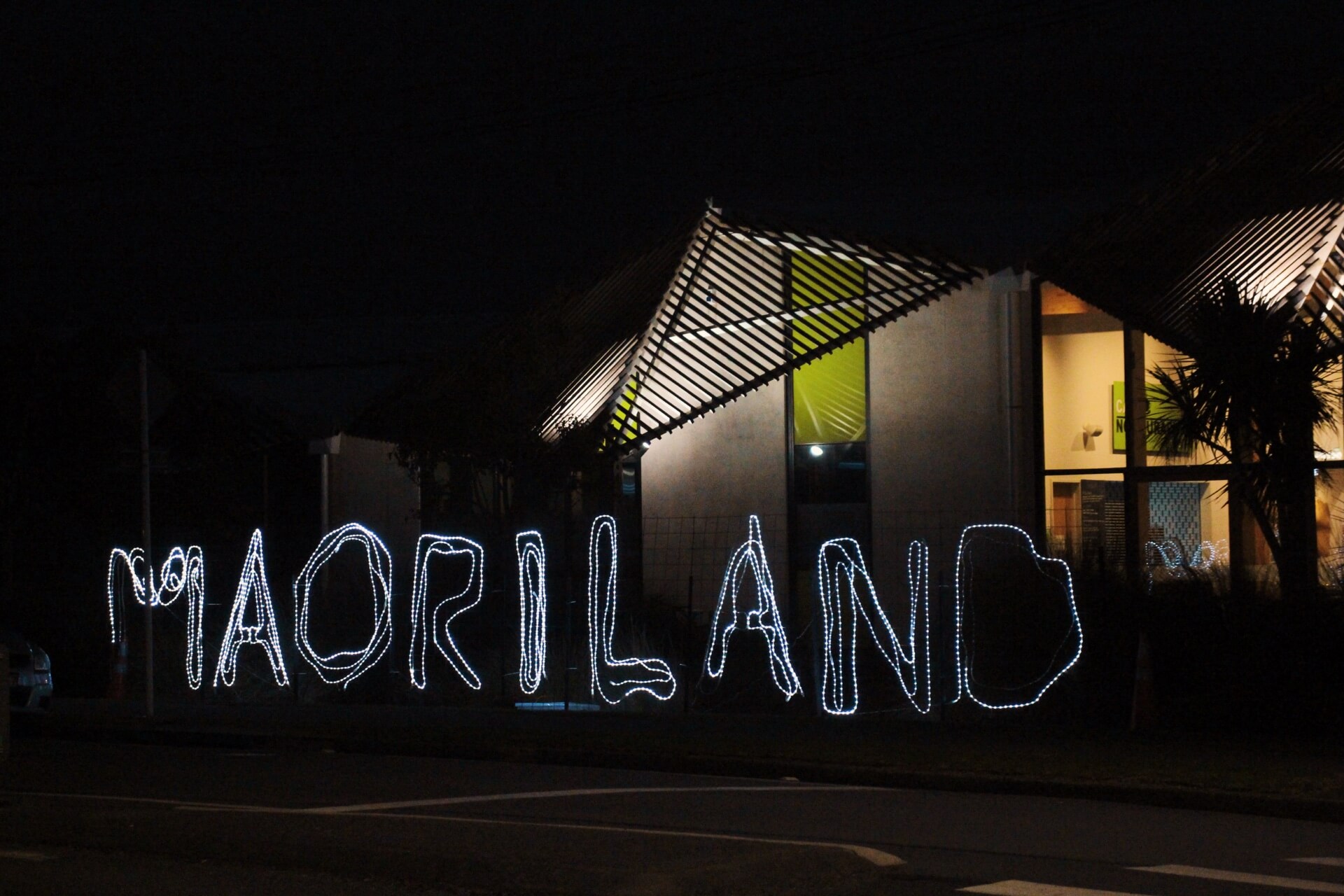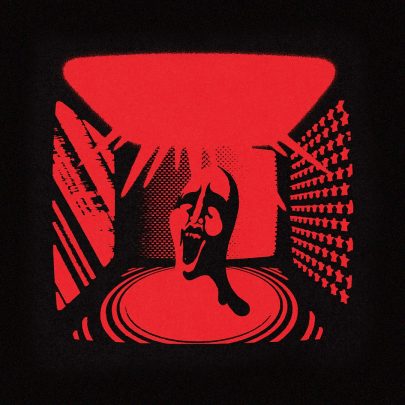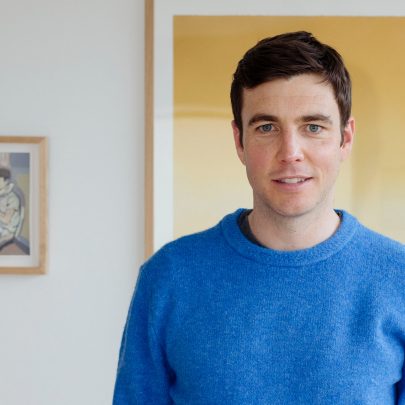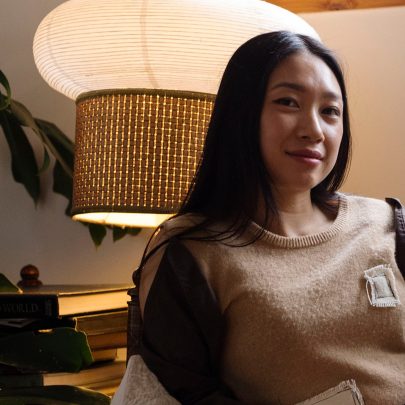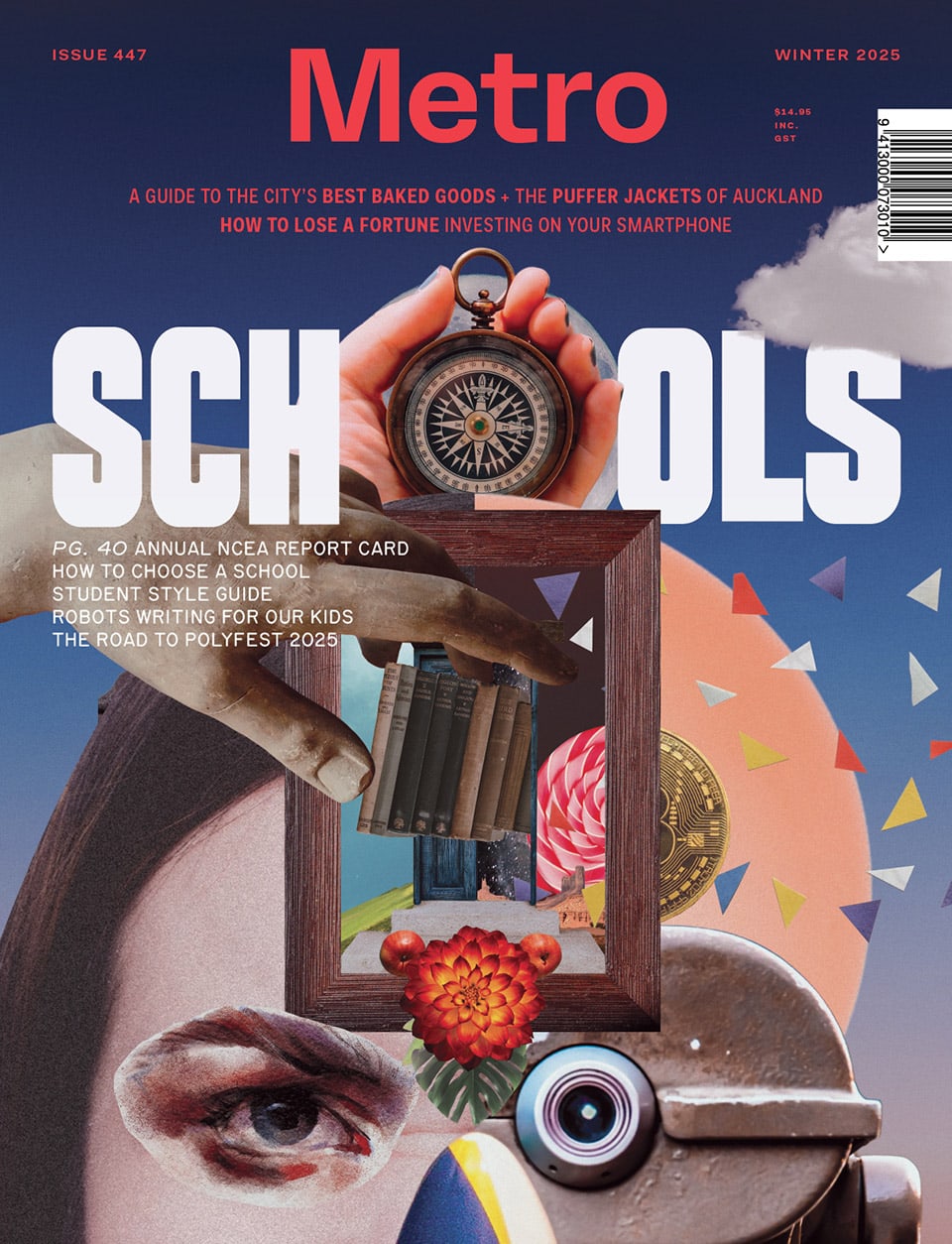Jul 9, 2024 Film & TV
It’s a clear, autumnal afternoon in the small Kāpiti Coast settlement of Ōtaki, and I’m sitting in the biggest building in town. Once a Farmers department store, the building is now the hub for one of the most exciting and distinctive festivals in Aotearoa, the Māoriland Film Festival. Madeleine Hakaraia de Young, 32, the festival’s remarkable (and remarkably busy) director, has stopped by for a quick chat. The Māoriland Hub now has a gallery space, meeting area, thriving garden, backyard bar and gift shop. An extended area has been transformed, with a small indoor stage, seating and dancefloor.
“When we first moved in, we didn’t have any furniture. It was just a massive space,” says de Young. “No one had been in here for years, so it was insanely dusty. Everything that’s in here has been recycled or made by people or cobbled together throughout the years.” And every year in March, for the past 11 years, the hub has served as a hotbed of activity as indigenous filmmakers from home and abroad congregate for a few days to share knowledge, watch and celebrate their work, and bask in the atmosphere of Ōtaki, a place that positively thrums with a feeling of community. This afternoon, a barbecue is burning away out back, hosting local rangatahi alongside scores of indigenous filmmakers from all over the world. Later in the evening, a karaoke night is planned.
It’s difficult not to speak in superlatives when it comes to Māoriland, particularly in a year that has already seen some major, bleak shifts in Aotearoa’s screen and arts industries. From humble beginnings in the early 2010s, the festival has grown exponentially and is now the biggest indigenous festival in the country. It’s been part of a sweeping iwi development strategy, the brainchild of Ngāti Raukawa leader and academic Whatarangi Winiata, called Whakatupuranga Rua Mano, to transform Ōtaki (where once te reo was in danger of dying out) into a thriving site of te ao Māori. At one end of the town lies the first Māori university, Te Wānanga o Raukawa, at the other the town’s mārae, just metres from the Māoriland hub.
When local filmmaker Libby Hakaraia and her partner, producer Tainui Stephens, made the short film The Lawnmower Men of Kapu, featuring Hakaraia’s own aunties, they realised that while the film had gained fantastic festival success overseas, the local community was missing out on the action. “One of our people, Pat Hakaraia, and his wife Tania, and Madeleine, the five of us came together and collectively founded it all,” Stephens says. “Me and Libby brought the production experience, Pat and Tania the community angle, and Madeleine, being so young, brought the youth audience.”
Stephens argues that filmmaking, this most recent of the major art forms, is just another evolution in a long line of storytelling forms. “Film is such a primal experience. It’s really an art, one that touches the human condition. After food and shelter, we need stories. Back in the day our ancestors would hang around the fire and hear stories of beasts and the bush. Same thing would happen at the marae. This is just an extension of that.” The belief was shared by indigenous film enthusiasts here and overseas — and so the festival (along with its parent organisation, the Māoriland Charitable Trust) grew. This year, more than 160 indigenous filmmakers from all over the globe travelled to be here.
During Māoriland, Ōtaki’s main drag is transformed. A short walk from the hub is the local theatre, a grand old movie palace named The Civic, that welcomes the throngs. Next door, this year, is a striking installation from Tāme Iti, employing the same iconography of white flags as his recent Waitangi Day demonstration. Metal figures and outlines are illuminated in red by night. Down the road, near Te Wānanga o Raukawa, is Ngā Purapura, a giant training facility with a cavernous gym space, retrofitted into a community viewing hall. Back down by the hub, Ōtaki’s community centre has been transformed into the headquarters for MATCH, which highlights technological advancements and digital artworks by indigenous artists. Visitors and locals amble down the footpaths, greeting each other, and stop to listen to the stirring chant of pūtātara instrumentation, which booms from speakers at the main intersection at certain points of the day. I spy Cliff Curtis, ably keeping a low profile, on my first day there. Later, I look on as Rachel House and the young cast of The Mountain, which premiered here to a sold-out audience the night before, snap pictures in front of the hub’s entrance. All around there is an air of festivity, but also of well-earned relaxation. This is a beach town, after all, a world away from the hustle and bustle of day-to-day industry. The vibes, as they say, are immaculate.
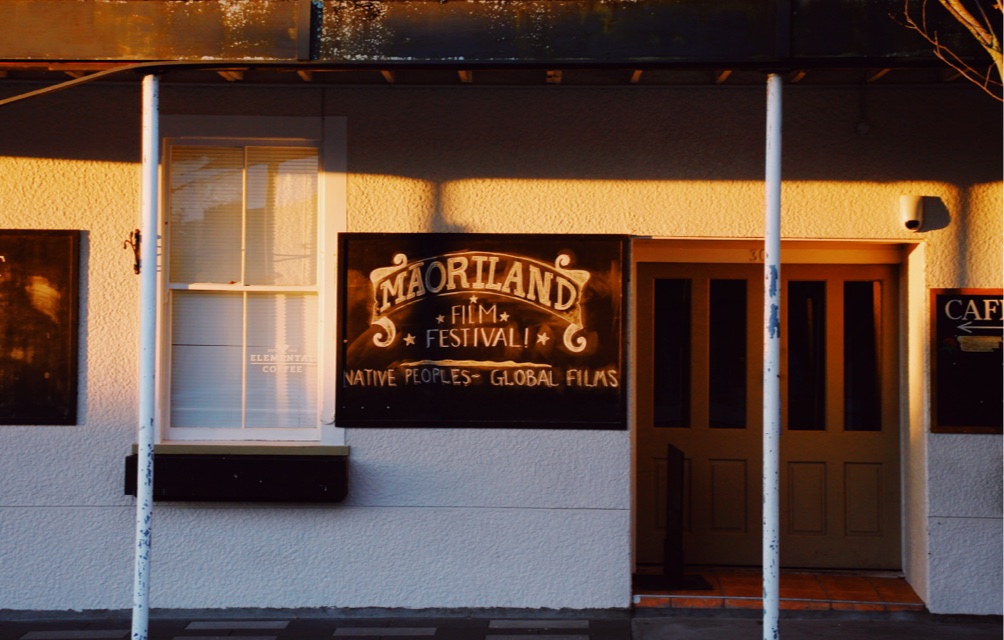
The best films I saw at Māoriland this year were shorts — unsurprising, perhaps, considering the majority of the festival’s programme consists of short films. This is reflective of a couple key truths about our industry: the level of difficulty indigenous filmmakers still face in graduating to the level of feature filmmaking; and the fact that some of the most innovative cinema in the world is found outside of the sphere of the feature. The sheer volume of diverse voices on offer at Māoriland was impressive, with the number of films rivalling last year’s New Zealand International Film Festival. My favourite film of the festival was Aykuo, a profoundly mysterious and unsettling ghost story from Northern Yakut filmmaker Ayaal Adamov. Shot on celluloid on barren, wintry Russian farmland, the film evokes the work of both David Lynch and legendary Russian filmmaker Andrei Tarkovsky in the way it channels the overlapping realms of dream and memory. For 22 minutes, I was in the grip of primal fear, grief and the feeling of something unnamable beyond the two. When the film ended, I realised it had been a while since I had drawn a breath.
The best New Zealand film I saw was the short Lea Tupu‘anga (Mother Tongue), Vea Mafile‘o’s superb, Sundance-premiering portrait of the hard-won connection made between a speech therapist and an elderly, aphasia-stricken Tongan man relearning English. Shot by María Inés Manchego, the film looks beautiful, the direction is patient and sensitive, and a genuinely staggering performance from Albert Rounds, whose palpable sadness radiates from the screen, anchors the film in a state of grace.
Pleasures abounded throughout the programme. A packed audience caught the viral success story that was Inky Pinky Ponky, a web series recut into an hourlong feature and released on YouTube for free, making for one of the most delightful screenings of the festival. It was also a telling window into the innovation of indigenous creatives in getting their films seen — created by fakaleitī writer and actor Amanaki Prescott-Faletau, the film is told from a perspective — that is, fakaleitī Tongan — that is rarely at the fore, and which deftly and often hilariously transforms the tropes and conventions of the American high school comedy to present something accessible to Pasifika youth. Putting the film on YouTube for anyone to watch is a further stroke of genius. For audiences who have not often been represented and aren’t regular patrons of the traditional cinema space, this effectively met viewers where they were. The result has been a sensation among Pasifika youth — one of the young stars of the film, the charming Aaron Pulemagafa, was in attendance and explained how it had transformed the cast into celebrities both in Aotearoa and back in the Islands. As the session’s moderator explained, “So many of the jokes in Inky Pinky Ponky have become part of the Pacific Island canon.” The film boasts over 1.5 million views on YouTube, a number practically unheard of in New Zealand web series (for comparison, Flat 3, known as one of the country’s most beloved web series, boasts around 50,000 views), and has attained one of the ultimate hallmarks of Gen Z zeitgeistdom: having scenes and lines remixed on TikTok.
One of the most notable aspects of Māoriland was the consistent, passionate attendance throughout the week. There were no sparsely attended sessions — a free evening screening of local hit Red, White & Brass packed out the entire Ngā Purapura space, to the point where audience members sat cross-legged in front of the screen. In the futuristically designed MATCH space, rangatahi excitedly flitted between different art installations. Walking in, you’re met with numerous people wandering around a small space, VR headsets over their eyes. I was particularly enamoured with Hawaiian artist Pōhaikealoha Panoke’s Voyaging Home, a game that utilises an old Gameboy console to tell a story of a Voyager (rendered in Pokemon-like pixels as a tiny astronaut) trying to follow his Ancestors’ footsteps and find where he came from.
Canadian artist Steve Diabo, in attendance at the festival, brought his installation Ancestors’ Gate to Ōtaki. A viewer sits in a comfortable armchair, picks up an analogue telephone, and stares into a tiny TV set, where a randomly selected short appears telling a story of First Nations people, a mix of old and new technology. “This is my first time in New Zealand,” Diabo told me. “I just love the intimate scale of this festival — everyone is accessible no matter what level they’re at. We are living in the middle of a renaissance of indigenous artistic creation, and it’s an awesome thing to be a part of.”
Also at MATCH, I caught the head of Sundance’s indigenous programme Adam Piron’s Dau:añcut (Moving Along Image), an experimental short composed almost entirely of TikToks, in which the filmmaker discovers an unknown Ukrainian man has a tattoo of his cousin’s grandfather. A search begins to find this man and discover why. The film wraps questions of identity, militarisation, threats against indigenous people the world over and the use of indigenous visuals into a compelling few minutes that leave more questions than answers.
The general dumbstruck aura of first-timers at the festival, myself included, felt rooted in a sense that this kind of event, and the atmosphere generated from it, is exceedingly rare and incredibly difficult to generate. Métis filmmaker Shane Belcourt, travelling from Canada with his film Warrior Strong, a triumphant, Andrew Dice Clay-starring crowd pleaser, chatted to me from a sausage sizzle line. “[Māoriland is] so united in brotherly and sisterly love. It’s just a great chance to be with the Māori people and the community here. It feels like family immediately, not like business at all, and it encourages you to ask yourself where you sit as a community filmmaker. It feels good, like a recharge. I’m getting more than I’m putting in because there’s so much love.”
Rap/metal artist Swizl Jager, whom I catch at a shorts screening for rangatahi, sums it up succinctly: “It’s really inspiring to see heaps of rangatahi, heaps of youth. It’s just inspiring to see people from all over the world, and there’s this common theme, which is basically ‘Land Back’, y’know?” One of the most important aspects of the festival, de Young notes, is the lack of structural hierarchies that make traditional filmmaking centres so cut-throat. “There’s a lot of elitism that causes a lot of disconnection in the film community. If we are able to keep film from feeling elite, that’s great,” de Young says. “We get to hang out, share our stories and discuss. We create a community that are passionate about indigenous film and want to participate in it.”
One feels gently held here, and gets the sense that this kind of independent, self-actualised indigenous community project has a certain fragility to it that must be protected. “People have talked about wanting to franchise [Māoriland], but it’s not something we want to grow too fast. Every tribe, every rohe has its own beauty and character, and we just want to keep Māoriland as it is and grow it, but in a controlled way,” explains Stephens. “When we created the charitable trust and bought the Māoriland space, we built our own home, we have our own tūrangawaewae. We invite who we want into our space, run it according to our own understanding of mana motuhake and tino rangatiratanga. Any enduring change in this world is going to come from the community up.” Filmmaker Billy Luther, whose low-key, charming coming-of-age film Frybread Face and Me closed out the festival, arrived for just two days from Los Angeles, and regularly intoned how the festival functioned as something of a ‘rest’ from the everyday grind, a sentiment I heard often during my time in Ōtaki.
As the festival ended, my partner Amanda mused that Māoriland served as a space in active dissent against the outlook of our current government. This was a place where te ao Māori and te reo are not just championed but lived and spoken in practice, where indigenous communities the world over could feel heard and protected, where meaningful discussion of climate change — a crisis most likely to impact indigenous communities first and hardest — was foregrounded, a place where art for art’s sake was the guiding mission. The theme of the festival, ‘Kia Tau Te Rongomau’, is simply a call for peace. In Iman Zahwary’s I Am From Palestine, one of the final films that screened at Māoriland, a young Palestinian-American girl attending school for the first time is asked to pin her home country on a map, then finds that her country’s name isn’t listed where it should be. Considering the current state of affairs, and Henare Tahuri’s carved tiki in the centre of the hub painted the colours of the Palestinian flag with the phrase ‘MAI TE AWA KI TE MOANA’, the theme took on a profound resonance.
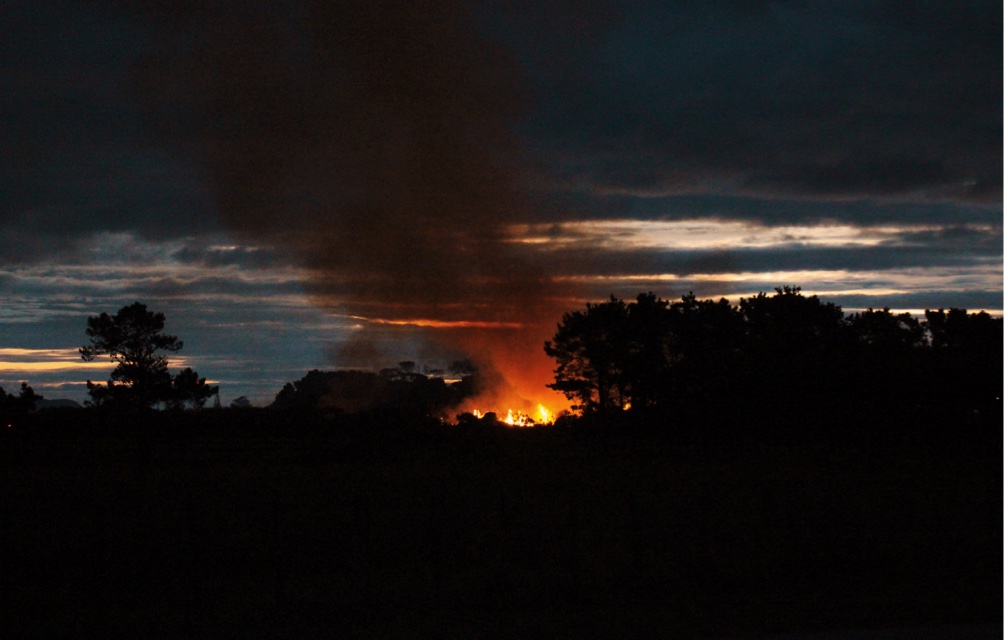
On the final night, we sat at Ōtaki Beach ahead of the screening of Frybread. Behind us, on the way into town, a fire had broken out in nearby scrublands. A menacing plume of smoke broke through the idyllic treeline, as a water-carrying chopper buzzed around the blaze. Fire trucks tore back and forth, sirens wailing. At the Māoriland Hub, the closing-night party began. Live bands performed; awards for best cultural regalia, best suit, best sequins and best outfit from the local Ōtaki op shops were handed out alongside the official awards for the best films. Meanwhile, Kamilaroi, Kooma, Jiman and Gurang Gurang artist Richard Bell held court, his gleeful face and shock of grey hair sticking out from his burgundy shirt and Beetlejuice-striped pants. My eyes passed over a piece of merch for the festival, a sticker emblazoned with the words ‘I’VE LOST MY HEART IN MĀORILAND’, assumedly a reference to a 1917 piece of music of the same title. Damn right, I thought, as the fire burned on outside.

